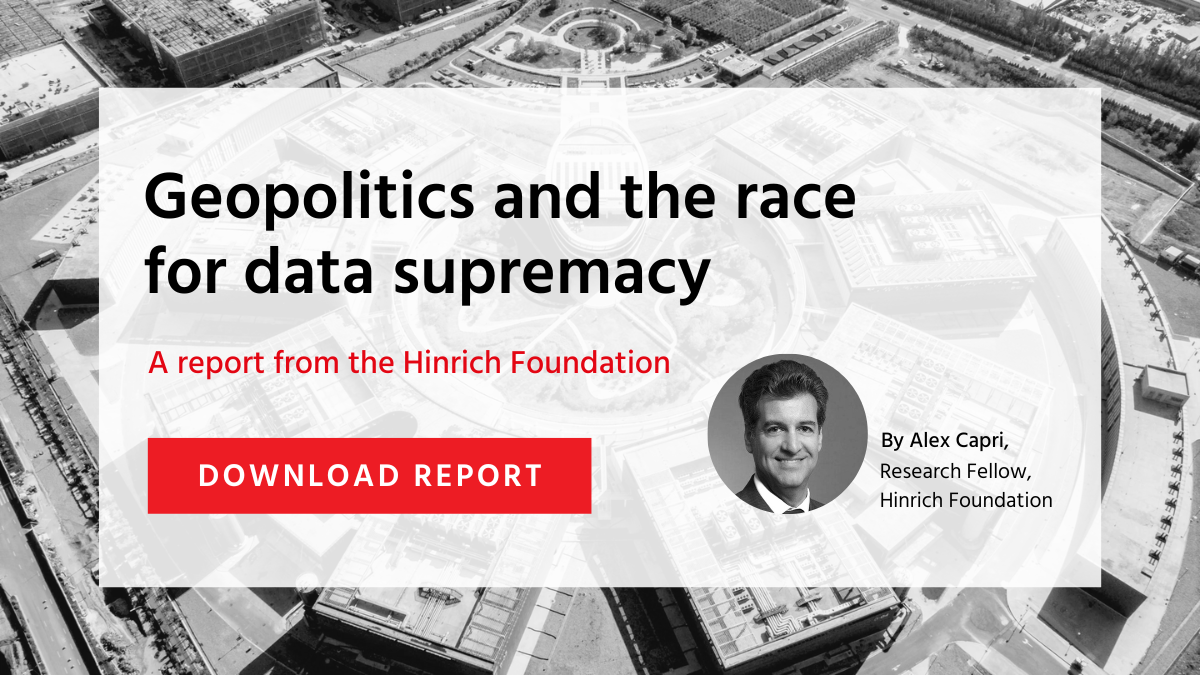Published 14 May 2024
Data centers are the vital nodes through which data connects and controls the digital terrain for virtually every type of online activity. Like other strategic technologies, techno-nationalism will continue to bifurcate and reorganize the data center landscape.
Imagine a ‘smart’ manufacturing robot as it parses data on a production line in Frankfurt generating an on-the-spot procurement order for a supplier in Kaohsiung. Or imagine a newly captured image of a patient’s cataract in a Sydney eye clinic that is sent to a team of medical experts in Philadelphia. This occurs almost instantly, after cognitive AI analysis studies millions of images from across the internet and matches the eye anomaly with a recommended remedy.
These events are happening today and represent mere drops in a growing ocean of data. Yet, they cannot occur without the services of modern-day data centers, which, by 2030, would represent a US$80 billion business.
Data centers drive the modern world. Whoever controls them not only controls access to the digital global commons but also reaps spectacular economic rewards and, from a security perspective, can harvest, analyze, and ultimately weaponize data. Preventing the potential for catastrophic data loss, corruption, or theft due to cyberattacks should be a top priority for policymakers and business leaders worldwide, in addition to carefully selecting the locations for these data centers.
These massive, energy-hungry infrastructures are also at the forefront of an intensifying geopolitical rivalry between Beijing and Washington. The competition over data centers is expected to be more widespread than undersea cables and space-based internet, given the ubiquity of data and central role of data centers. This rivalry extends into other domains of the data center supply chain, including artificial intelligence and cleantech, and unfolding from sub-tropical Singapore to sub-artic Finland. Dive in the world of the ultimate power multipliers with this paper by Research Fellow Alex Capri.
© The Hinrich Foundation. See our website Terms and conditions for our copyright and reprint policy. All statements of fact and the views, conclusions and recommendations expressed in this publication are the sole responsibility of the author(s).







